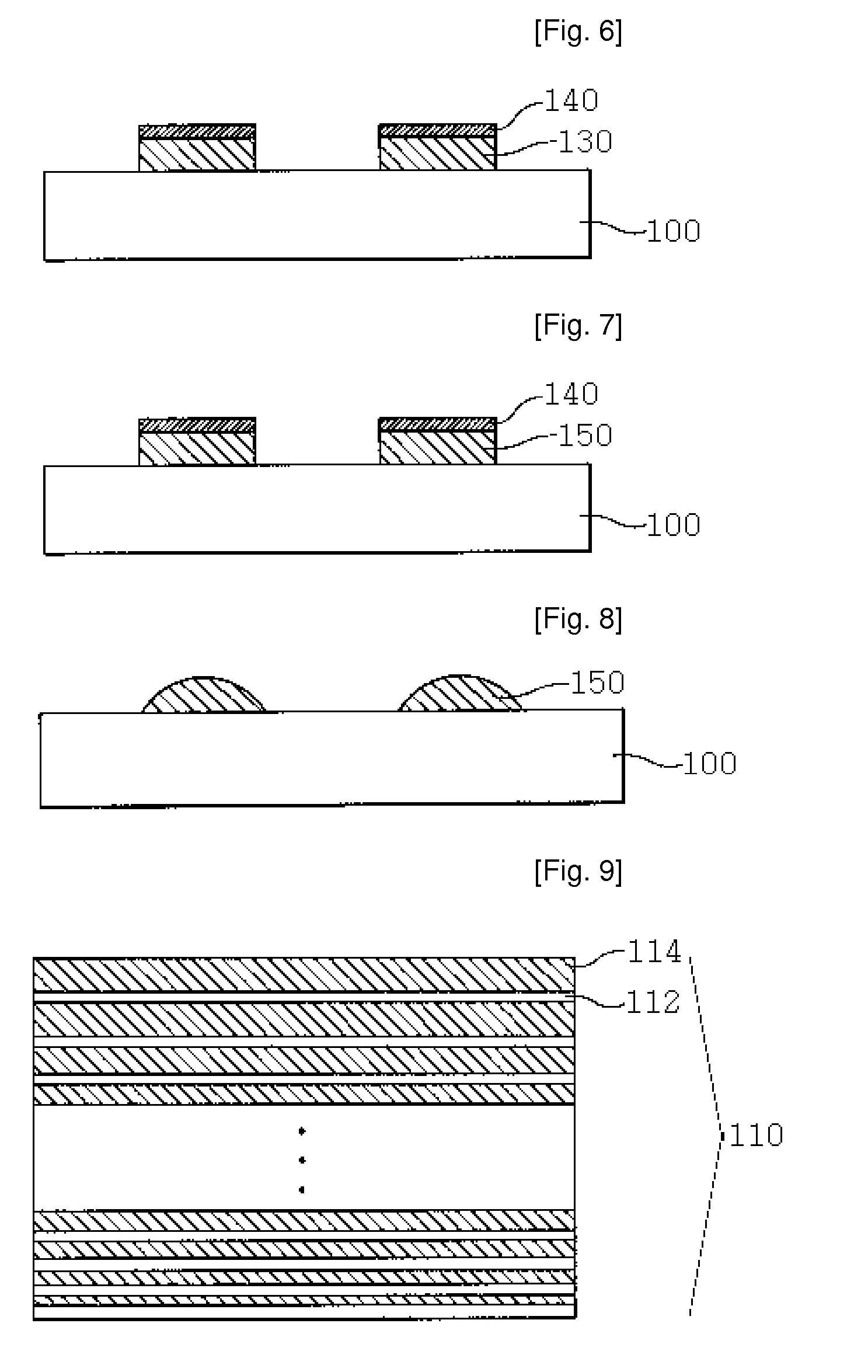Method for Fabricating Micro-Lens and Micro-Lens Integrated Optoelectronic Devices Using Selective Etch of Compound Semiconductor
- Summary
- Abstract
- Description
- Claims
- Application Information
AI Technical Summary
Benefits of technology
Problems solved by technology
Method used
Image
Examples
Embodiment Construction
[0024]Hereinafter, exemplary embodiments of the present invention will be described in detail. However, the present invention is not limited to the exemplary embodiments disclosed below, but can be implemented in various types. Therefore, the present exemplary embodiments are provided for complete disclosure of the present invention and to fully inform the scope of the present invention to those ordinarily skilled in the art.
Exemplary Embodiment
[0025]FIGS. 5 through 8 are cross-sectional views illustrating a method of fabricating a microlens using selective etching of a compound semiconductor according to an exemplary embodiment of the present invention.
[0026]Referring to FIG. 5, a compound semiconductor layer 110 is formed on a substrate 100. The compound semiconductor layer 110 contains a reactive metal. The reactive metal may be aluminum (Al). Also, the compound semiconductor layer 110 may be formed by an epitaxial growth process. The content of the reactive metal in the compound...
PUM
 Login to View More
Login to View More Abstract
Description
Claims
Application Information
 Login to View More
Login to View More - R&D
- Intellectual Property
- Life Sciences
- Materials
- Tech Scout
- Unparalleled Data Quality
- Higher Quality Content
- 60% Fewer Hallucinations
Browse by: Latest US Patents, China's latest patents, Technical Efficacy Thesaurus, Application Domain, Technology Topic, Popular Technical Reports.
© 2025 PatSnap. All rights reserved.Legal|Privacy policy|Modern Slavery Act Transparency Statement|Sitemap|About US| Contact US: help@patsnap.com



